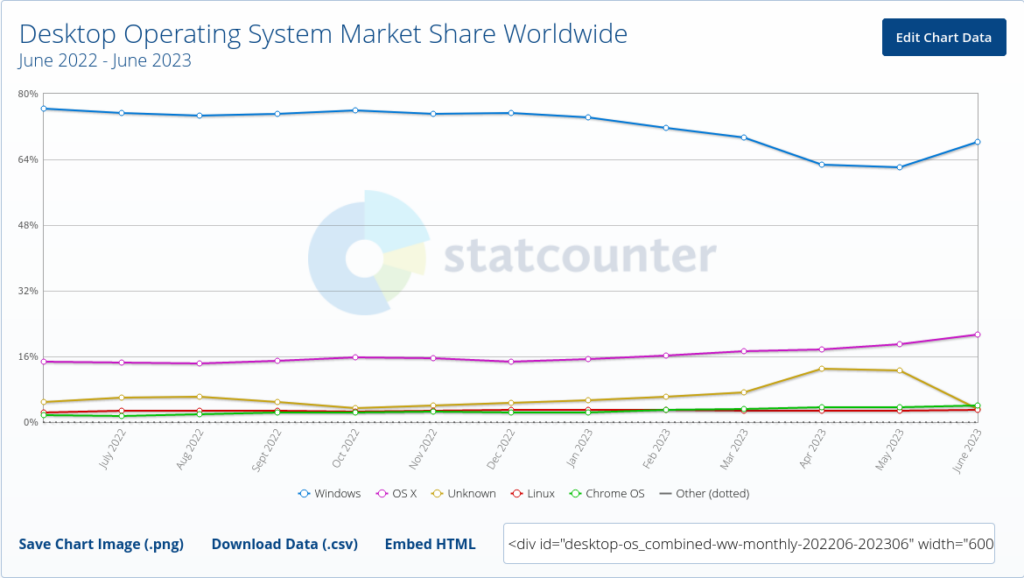A simple glossary of some terms used in computing
Enough memory to store one character (for example, the letter A)1,024 (approximately one thousand) bytes = 1 kilobyte, abbreviated KB
Enough memory to store a 200-word essay (almost one page)1,048,576 (approximately one million) bytes = 1 megabyte, abbreviated MB. Enough memory to store 200,000 words (almost 1,000 pages)1,073,741,824 (approximately one billion) bytes = 1 gigabyte, abbreviated GB. Enough memory to store 200,000,000 words (almost 1,000,000 pages)
CD-ROM: Acronym for Compact Disk – Read Only Memory. A CD-ROM can store up to 650 MB of information. Most of the software is available on CD-ROM for installation on your PC. A CD-ROM drive can read CD-ROMs as well as music CDs.
CD-R: Acronym for Compact Disk – Recordable. A CD-R drive can be used to not just install software or play music CDs, but also record information. However, it is only possible to record information to the disk once.
CD-RW: Acronym for Compact Disk – Recordable Writeable. A CD-RW drive allows users to record and erase information onto a disk multiple times. You can use the CD-RW drive to back-up files on your computer or to create music CDs.
CPU: Acronym for Central Processing Unit. You can think of the CPU as the brain of the computer; it is responsible for everything the PC does. There are different brands of processors such as Pentium or Celeron. The speed at which a CPU processes information is measured in Megahertz (MHz) or Gigahertz (GHZ).
Database program: One used to create and manage large amounts of information in one place. eg: Microsoft Access.
DVD: Acronym for Digital Video Disk or Digital Versatile Disk. DVDs can store large amounts of information whether it is large computer files or full length movies. A standard single-layer, single-sided can store 4.75 GB. However, two layer DVDs can store 8.5 GB and double sided DVDs can store 17 GB.
Floppy disk: A disk that stores information magnetically. Most disks are formatted and can store 1.44 MB of data. It is important to keep disks away from extreme heat and cold, liquids, and magnets. It is recommended that you keep disks in a protective case.
GHz: Abbreviation for Gigahertz. One GHz represents one billion cycles per second. The speed of the CPU is measured in Gigahertz. The higher the number, the faster it goes.
GUI: Pronounced “Gooey”, this acronym stands for graphical user interface which allows you to activate commands or perform certain tasks by clicking on menus or icons, rather than typing in cryptic commands. For example, you can click on the picture of a printer to print a document.
Hard drive: The primary storage area within your computer, usually a hard, metal disk. The higher the number attached, the more storage room you have for programs as well as files created with those programs.
Hardware: Anything you can physically touch, such as the mouse, keyboard, monitor, CPU, or printer.
MHz: Abbreviation for Megahertz. One MHz represents one million cycles per second. The speed of the CPU is measured in Megahertz. The higher the number, the faster it goes.
Modem: Device used to access the Internet via the telephone. The fastest modem on the market today is 56k v90. Modems are measured by how much information can be transferred per second, or kilobits per second (Kbps).
Motherboard: The main circuit board which holds all of the components for the PC, the CPU and fan will be fixed to the motherboard, together with memory chips and any expansion circuit boards (or cards) to provide additional features and the hard drives, floppy disks and CD/DVD drives will be attached by cables.
Operating System: The operating system, or OS, is a piece of software that runs the computer. The operating system is responsible for managing the software installed on the computer. Windows is the operating system most likely installed on your computer, although the Linux system based on UNIX is becoming more common. MAC OS is a dedicated OS for MAC pcs. The operating system is a program that runs the computer. Whenever you turn on the computer, after running throught the BIOS the computer searches for its operating system.
PC: Stands for Personal Computer.
RAM: Abbreviation for Random Access Memory. Often times people refer to RAM as Memory. RAM, or memory, can be thought of as a workspace. The more RAM you have, the more workspace you have. The more workspace you have, the more projects you can do at one time, and the faster you will be able to finish those projects. RAM is measured in megabytes.
Software: Software is installed on your computer. An individual piece of software is often described as a program or application.
Spreadsheet program: One used to perform calculations or store data. Many people use spreadsheet programs to manage business or household budgets. eg: Microsoft Excel.
USB flash drive: A portable solid state storage device that plugs into a computer’s USB port.
Word processing program: One used to create written documents such as letters. eg Microsoft Word.

